DPT Program Technical Standards Policy
Enrolled students must meet the following technical requirements for progression and graduation from the Russell Sage College Doctor of Physical Therapy program. If you believe you may need accommodations or support to achieve these standards, we encourage you to contact the Russell Sage College Office of Accessibility Services at [email protected] or 518-244-6874, to establish a reasonable accommodation.
Requested accommodations will be given due consideration and reasonable accommodations will be made where consistent with curriculum objectives and legal requirements applicable to the Physical Therapy Department and Russell Sage College.
Download the Technical Standards Form:
Professional Attitudes and Behaviors
Enrolled Doctor of Physical Therapy students at Russell Sage College are expected to embrace diversity, equity, and inclusion as essential components of a rich intellectual and cultural environment in which all members are given the opportunity to reach their full potential as active participants in our local and global society. Students must be able to relate successfully to patients, families, and colleagues with honesty, integrity, and dedication in a non-discriminatory manner. Students must gain awareness of their personal reactions and responses, recognize multiple points of view, and integrate these appropriately into clinical decision-making.
Students must demonstrate the following ethical, legal, and interpersonal standards, including but not limited to:
Ethic and Legal Standards
- Follow policy and procedures related to the profession, state/national laws, and institution/agency/organization.
- Recognize and uphold individuals’ rights for safety, dignity, privacy, modesty, confidentiality, and autonomy.
- Report violations of ethical and legal policies to appropriate governing authorities/organizations.
Interpersonal Standards
Teamwork:
- Demonstrate flexibility and adaptability for team and personal success.
- Exhibit appreciation for others’ contributions by recognizing them and responding positively and appropriately.
- Demonstrate mutual respect and offer supportive behaviors to assist team members, clients/patients, and families.
- Be kind, patient and personable.
- Demonstrate effective conflict resolution skills.
- Establish and maintain therapeutic rapport in order to effectively collaborate with members of the community, interdisciplinary team, colleagues/peers, families, and patients/clients.
- Firmly establish effective, cooperative, productive, and sensitive relationships within organizational systems’ hierarchical continuums.
Accountability:
- Mindfully solicit and accept constructive criticism.
- Learn from previous mistakes.
- Follow through on commitments and meet established deadlines.
- Actively seek solutions to problems and feedback from others while problem solving.
- Accept responsibility for your actions and their effects on others.
Integrity:
- Correctly judge the limits of one’s own competence and to seek help from an appropriate source when necessary.
- Recognize the need for assistance (and ask for help) to overcome obstacles that interfere with scholastic and/or professional performance.
- Be honest. Do the right thing.
- Demonstrate independent dedication, motivation, and determination for autonomous success.
Excellence:
- Demonstrate resourcefulness.
- Be accurate and attentive to detail.
- Remain open-minded and accepting of new ideas and situations.
- Actively seek new knowledge and skill set acquisition.
- Be thorough and demonstrate quality workmanship and effort.
- Set exceptional standards for personal performance and goals.
- Remain current in contemporary Physical Therapy practice and take pride in your work.
Communication Skills
Effective communication involves the timely exchange of information in a way that it is received and understood in regards to its clarity, intent, emotion and meaning. It involves the ability to listen, use and interpret verbal, written, and nonverbal communication, and the ability to adjust communication for situational needs.
Specific requirements for students include but not limited to the ability to:
- Demonstrate appropriate professional communication during personal interactions, written, recorded and verbal communication.
- Communicate effectively and efficiently in a timely manner with faculty, students, and guests in RSC classes and activities.
- Interpret verbal and nonverbal communication (facial expressions and body language, gestures, vocalizations etc.), and clearly/accurately record information.
- Communicate effectively and efficiently with patients, their families and other members of the health care team.
- Develop effective and appropriate relationships with patients, clients and their families that conveys compassion and empathy.
- Provide patient-centered and client-centered education and consultation.
- Impart information or skills, and educate peers or other health care providers, in activities related to physical therapy.
- Demonstrate competency in verbal and written communications, and spoken English language.
Physical (Sensorimotor) Skills
Students must possess the fine and gross motor abilities and equilibrium necessary to perform physical therapy assessments and interventions for patients of all ages and sizes in a safe and effective manner. Students must possess the physical ability to sufficiently move patients and themselves about in varying work environments, on various surfaces, and to and from different levels while maintaining the safety of both patients and themselves. In addition, students must possess adequate motor ability to respond efficiently and effectively in an emergency situation. Students must also possess sufficient visual, auditory, and tactile abilities to allow them to gather data from written reference material, oral presentations, observed demonstrations, and in order to respond efficiently and effectively in an emergency situation.
Examples of specific functional tasks may include but are not limited to the ability to:
- Record information in electronic format.
- Assist individuals who have movement disorders with various transfers or transitions using equipment or furniture (e.g., moving from a bed to standing and then turn to sit in a wheelchair, moving from the floor to standing and from standing to the floor).
- Negotiate a variety of environmental obstacles.
- Provide manual resistance sufficient for maximal manual muscle test (MMT) of large muscle groups.
- Maintain safety of individuals in various positions, with or without equipment, during examination and treatment.
- Effectively manage and perform wound care via a variety of techniques (such as sharp debridement, bandage application).
- Occasionally move and support objects weighing up to 50 pounds.
- Access transportation to and from classroom/lab, clinical, and community events.
- Safely assume and maintain a variety of body postures in order to perform individual examination and intervention.
- Maintain sufficient physical endurance to effectively manage care in a timely manner.
- Follow standard precautions (such as handwashing and use of alcohol-based hand sanitizer) and utilize appropriate personal protective equipment.
- Conduct routine physical examinations and diagnostic maneuvers to form an accurate and comprehensive assessment of relevant individual health, behavioral, and medical information (such as blood pressure, goniometry, orthopedic and neurological special tests).
- Effectively perform CPR and emergency first aid.
Students must maintain sufficient Visual, Auditory, and Tactile abilities to perform various parts of the patient examination and intervention, including but not limited to the ability to:
- Tactile
- Palpate body landmarks
- Detect tissue/joint irregularities
- Detect muscle activity sufficient to distinguish trace contractions
- Detect temperature
- Auditory
- Auscultate the heart and lungs
- Hear medical alarms in case of an emergency
- Hear patient cries for help in order to respond quickly and efficiently in case of emergency
- Visual
- Visually examine patient movement patterns in order to adjust treatment
- Assess the environment for safety hazards
- Examine skin integrity and skin wounds in order to make clinical judgments
Intellectual, Conceptual, Integrative, and Quantitative Analysis Abilities
Learning is a complex, multifactorial process requiring active student participation and motivation, focused engagement, and critical thinking. Learning can be the acquisition of new behavior, the reorganization of material, and/or the search for new meaning. Learning involves acquisition of knowledge, retention of knowledge, application of knowledge, and is a never ending, always changing process.
- Knowledge acquisition in a DPT program requires student readiness, independent learning, and openness to learn from multiple sources; such as lectures, lab experiences, case based simulations, demonstrations, use of computer-based technology and applications, electronic documents, images from paper, videos, and powerpoint slides, group work/collaboration, concept maps, reflective thinking, problem solving, mentoring, role modeling, interprofessional education (IPE), community involvement, individual readings and research.
- Knowledge retention requires analysis and synthesis of information through persistent engagement with the material.
- Knowledge application requires the critical and timely employment of learned material, recognizing the complexities and subtle nuances of information, in ever changing contexts.
Reasoning Skills
Students must be able to analyze and integrate didactic content, evidence-based research into the clinical practice setting. Students must participate in the ongoing process of developing clinical reasoning skills in order to evaluate, make physical therapy diagnoses, predict prognosis, and select appropriate interventions in an efficient manner.
- Develop clinical judgments based on the data obtained in a comprehensive examination and evaluation of the patient/client to determine a physical therapy diagnosis and prognosis.
- Problem solve and think critically to judge which theory and/or strategy of assessment and intervention is most appropriate for facilitating the attainment of the highest level of function for individual patients and clients.
- Recognize, gather, and synthesize critical pieces of information for clinical reasoning and decision-making during individual assessment activities to formulate and modify a plan of care in class or in the clinical setting.
- Use scholarly evidence to inform decision-making in the classroom and clinical environment.

